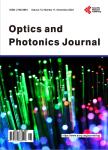Photomechanical Ablation of 304L Stainless Steel, Aluminum Oxide (Al<sub>2</sub>O<sub>3</sub>) Thin Film, and Pure Silicon
Photomechanical Ablation of 304L Stainless Steel, Aluminum Oxide (Al<sub>2</sub>O<sub>3</sub>) Thin Film, and Pure Silicon作者机构:Instituto Tecnologico y de Estudios Superiores de Monterrey Campus Estado de Mexico Atizapan de Zaragoza Mexico Instituto Politecnico Nacional-Centro de Investigacion e InnovacionTecnologica (CIITEC-IPN) Mexico City Mexico Instituto Tecnologico y de Estudios Superiores de Monterrey Campus Queretaro Santiago de Queretaro Mexico
出 版 物:《Optics and Photonics Journal》 (光学与光子学期刊(英文))
年 卷 期:2016年第6卷第10期
页 面:275-288页
学科分类:08[工学] 080502[工学-材料学] 0805[工学-材料科学与工程(可授工学、理学学位)]
主 题:Laser Ablation MEMS Ytterbium-Doped Fiber Laser Thin Film
摘 要:Recently, a number of studies have focused on micro-manufacturing processes, which find use in a variety of applications, including the production of microelectromechanical systems (MEMS). The process of ablation in materials is mainly governed by the laser source and scanning speed. The rate of material ablation is influenced by chemical and physical properties. In this work, the energy from a CO2 laser was used to ablate three different materials, namely, stainless steel 304L, a thin film of amorphous aluminum oxide (Al2O3), and pure silicon, due to their wide use in MEMS technology. The laser parameters used were an average power of 18 W and a spot size of 200 μm. The maximum depth during the photomechanical ablation process was 72 μm in the case of 304L steel and 77 μm in the case of the Al2O3 thin film for a scan rate of 24 mm/min. However, at the same scan rate, silicon did not exhibit any penetration. As expected, while increasing scanning speed the ablation depth decreases due to reduced interaction time between laser and material. The theoretical ytterbium fiber laser shown in this study can thus be employed in the manufacturing of a wide variety of materials used in the production of MEMS as well as those used in clean energy technologies.



